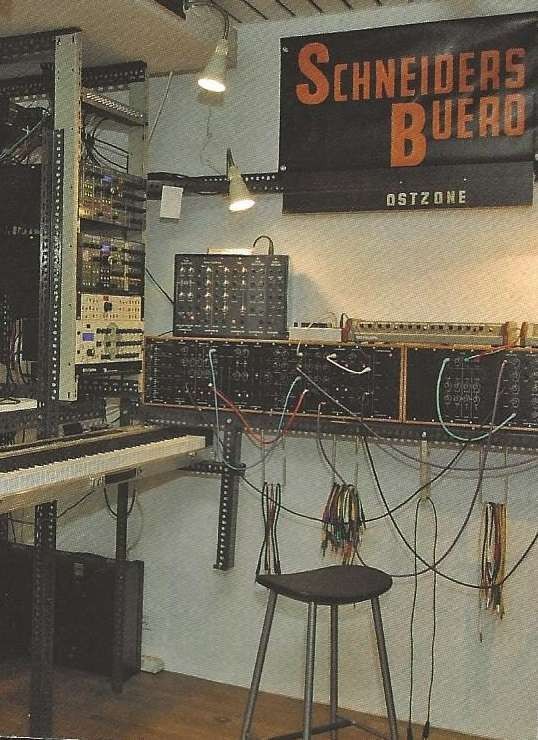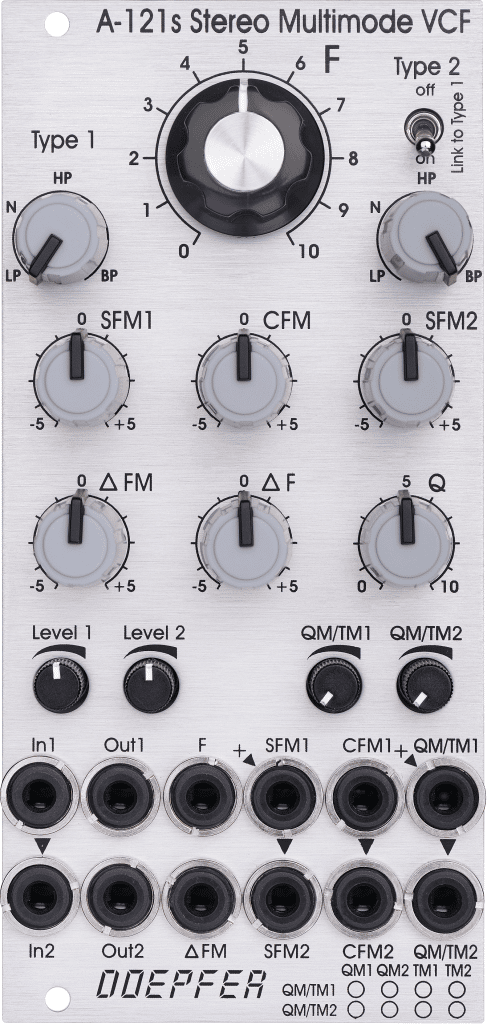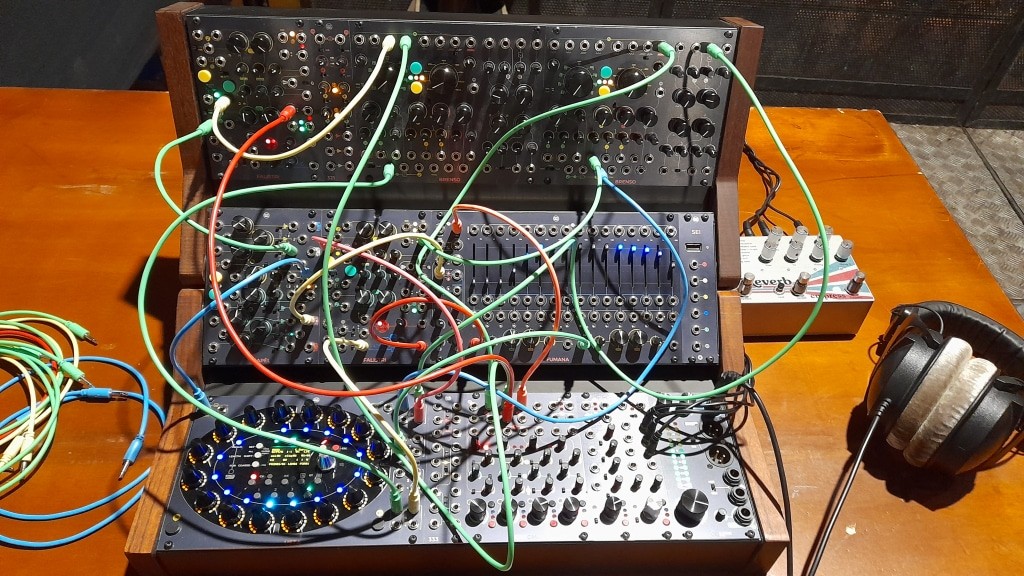Synthesis and Synthesizers
Published on 25/01/2023

As anticipated in our introductory post, at Roma Modulare 2022 we had the chance to meet and chat with all the participating companies about the wonderful world of the synthesizers.
We first met ALEX4, a big German distributor who brought Doepfer and Frap Tools products to the show.
The report of our conversation follows.
ALEX4 started in Berlin at Alexanderplatz 4 when Herr Schneider founded SchneidersBuero in 1999. A small collective "studio" in the backyard was misused as a showroom for just three to five first products.

With the increasing number of techno producers and synthesizer nerds gathering in Berlin, the office moved several times and grew into a well-known specialized retail business called Schneidersladen.
The original place in Alexanderplatz 4, as well as the wonderful original building where everything started, do not exist anymore.
The ALEX4 Distribution Company was founded in 2012 with the energy of Herr Schneider and partners representing selected manufacturers of electronic musical instruments and modular Eurorack into the growing European world of trade and marketing.
Representing brands means to be responsible for communication, explanation, registration, support and service in all directions, clearing legal issues and promoting all products not just into well known media channels.
ALEX4 represents several makers of modular Eurorack devices, desktop synthesizers and other tools for creative works.
ALEX4 is well connected and exporting to a selection of about 450 retailers in 46 countries on five continents.
Among the devices brought to Roma Modulare 2022 by ALEX4 there were a couple of racks full of Doepfer Eurorack modules.
They were quite representative of the whole brand’s catalog but the focus was on the new A-121s Stereo Multimode Filter.
This is a dual filter suitable for filtering in stereo patches, but also dual mono and serial interconnection.

The filter consists of two separate but similar filter cores that share cutoff and resonance as common controls.
Since the A-121s is a true state-variable filter, each channel can be continuously varied in characteristic from Low Pass through notch and High Pass to Band Pass.
In link mode, the characteristic of filter 2 (type 2) corresponds to the setting of the first filter.
CV inputs with and without (bipolar) attenuators offer maximum flexibility regarding the modulation possibilities of individual and common parameters.
The QM/TM 1/2 inputs can be assigned to the Type or Resonance parameters for each filter on the rear panel via jumper.
The audio inputs and some of the control voltage inputs are normalized, so depending on patch one modulation source is sufficient to control two equal parameters.
Due to the slope of 12dB the dual filter shines with a soft, round sound whose resonance does not color too much.
A video (shot at the show) with a brief demo of the filter follows:
The Frap Tools catalog was also well represented by the units available at the ALEX4 desk.

The most interesting module was the Frap Tools USTA that was also used for the workshop Polyrhythms, polimeters, polytimes and other nice things by Frap Tools.
USTA is a 4×4 track sequencer for voltages and gates with variable stage duration, designed to quickly see and edit multiple voltage relationships in real time.
Variable stage duration means that every single stage duration can be individually set in relation to the clock, instead of being constrained to a one-to-one ratio (i.e. one stage per every clock impulse).
4×4 track means that every stage can store and generate up to four separate voltages (two CVs and two gates), and that up to four independent stage sequences can be arranged into as many different tracks.
Its architecture is based on an array of 16 Stages which form a Pattern; 16 patterns form a Track, and four tracks form a Project.
Within each track, each stage can provide two gates and two CVs, and a wide set of options is available to define and modify the value of each output (Layers) and the way it is played (Colors).
Every Stage is related to a dedicated stepped encoder for quick and intuitive editing, and all the 16 encoders are arranged in an oval layout with a circular playhead.
Every encoder is surrounded by a ring of 16 LEDs and a RGB LED, to provide a visual feedback of the current setting of that step according the actual layer being processed (such as raw CV, quantized CV, length, gate and so on) and the way it should play depending on the RGB color.
An introductory tutorial about USTA can be found at the following videos:
Spending time with the ALEX4 guys was, at the same time, funny and interesting. It was very interesting to learn about the story of the Company and see how many brands are well represented by them.
The funny part came thanks to the filled up racks that allowed us to put our hands on and directly test the modules and the devices on show.
The workshop Polyrhythms, Polimeters, Polytimes and other nice things by Frap Tools was also very interesting as we had the chance to appreciate all the possibilities offered by the USTA sequencer.
Thanks to ALEX4 for being at the show to share part of its huge experience with us.
Join us today and get 5% off your next order!

Empty cart